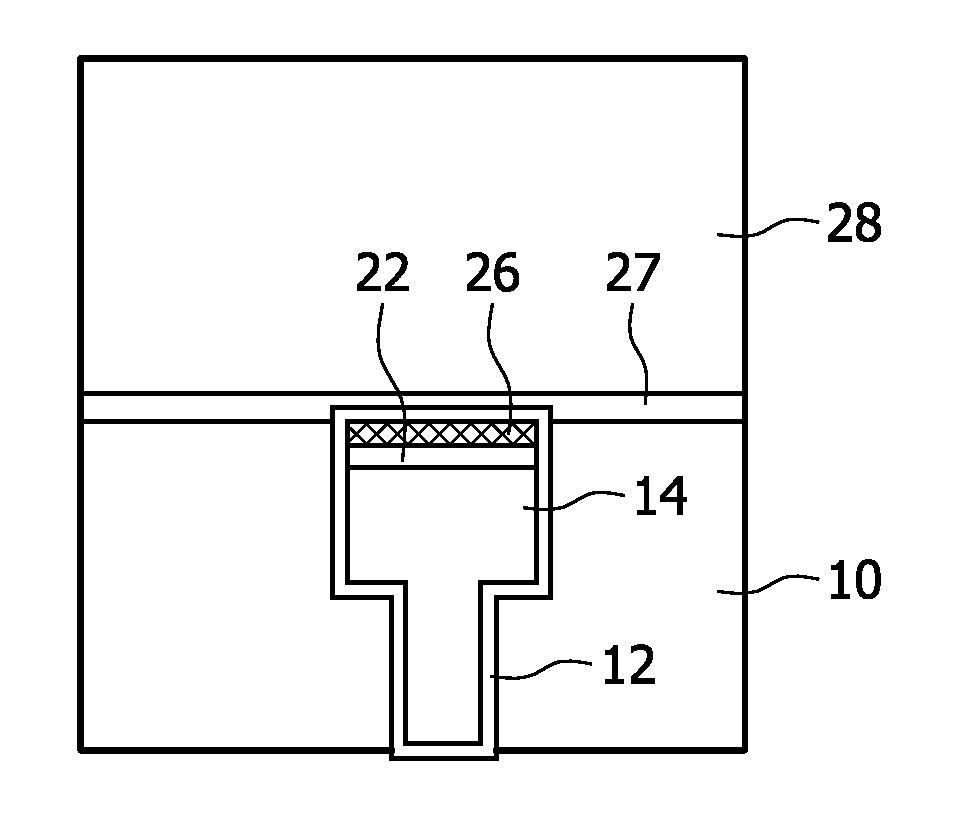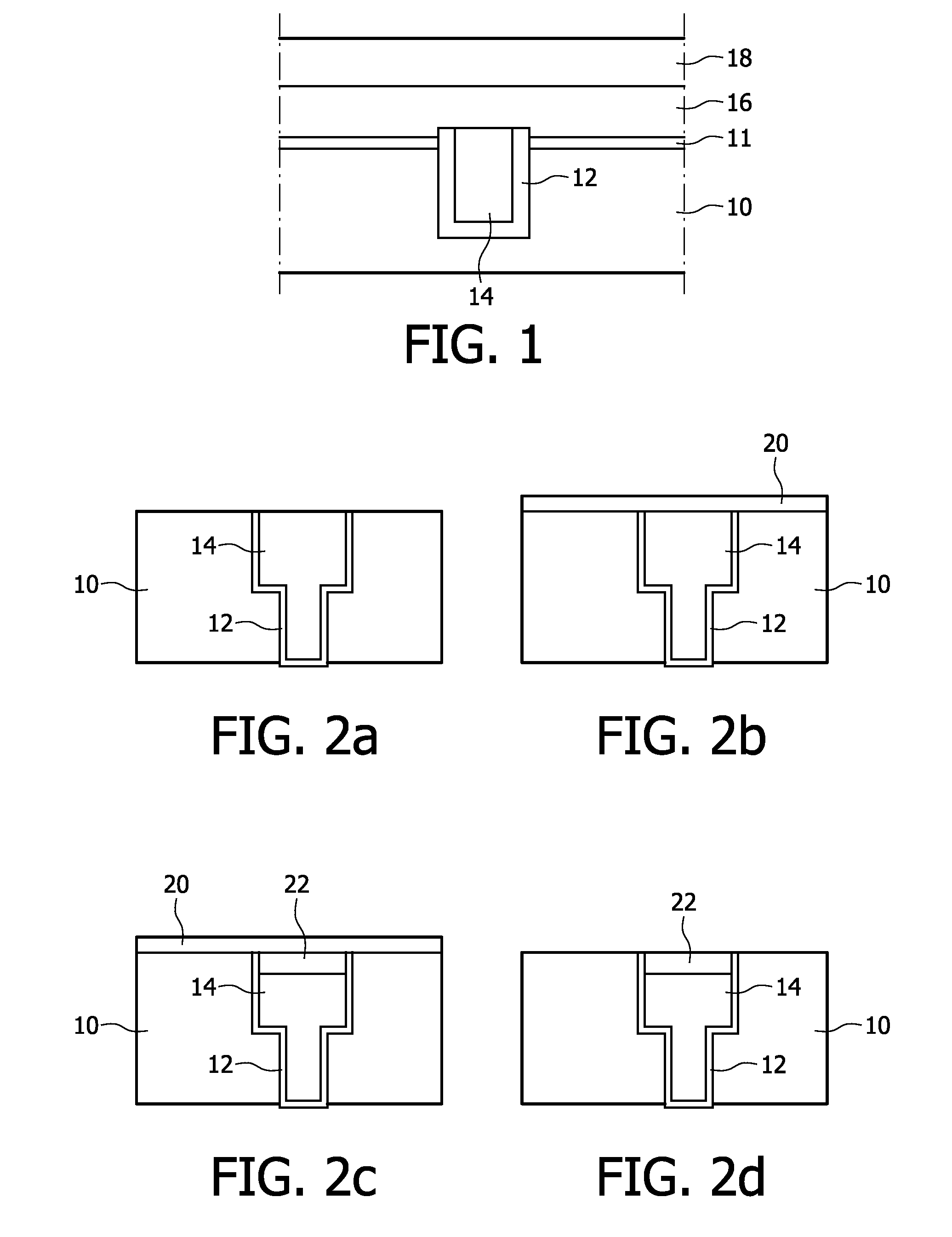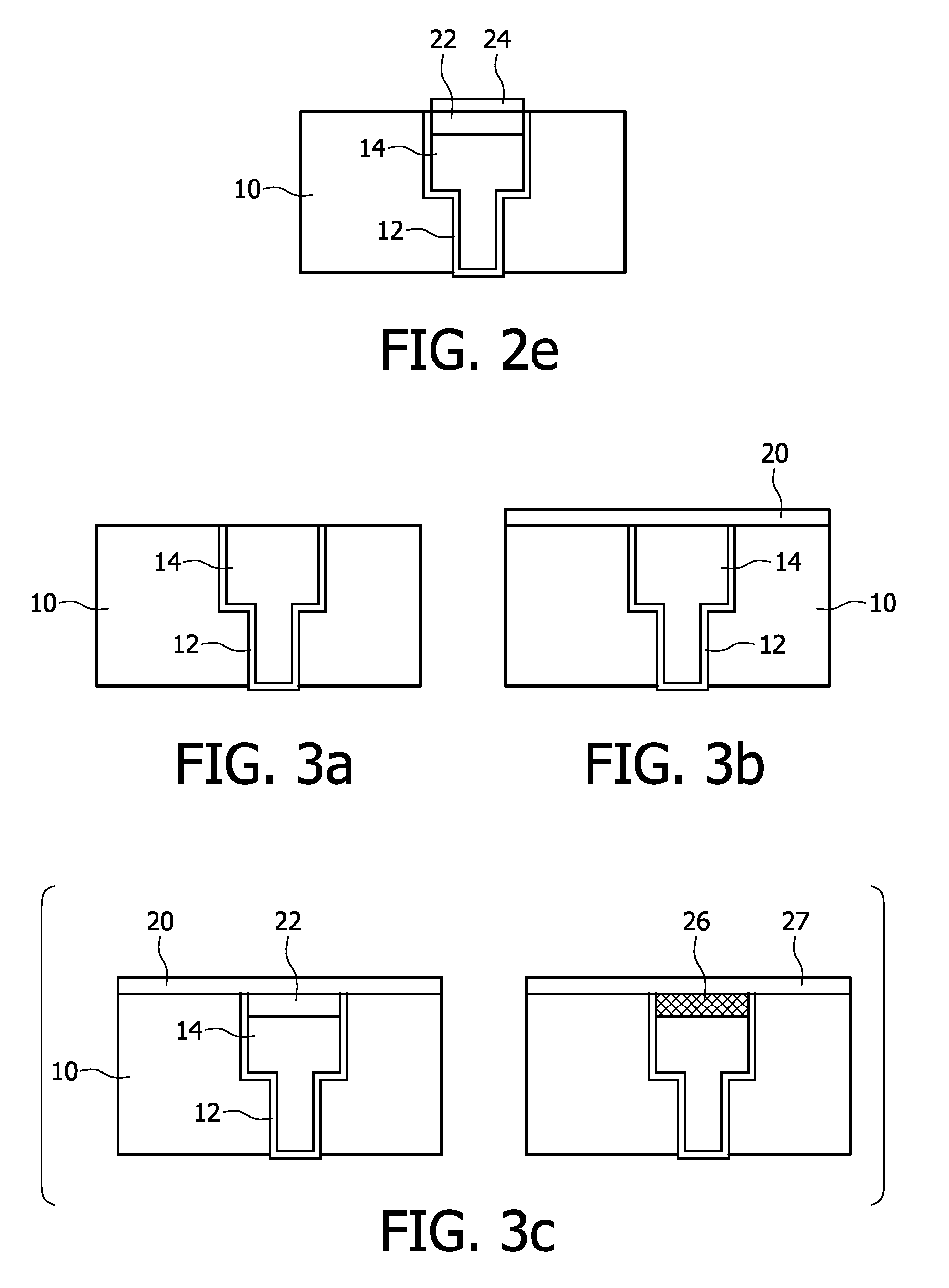Method of Forming a Self Aligned Copper Capping Layer
a self-aligning, copper capping technology, applied in the direction of semiconductor devices, semiconductor/solid-state device details, electrical apparatus, etc., to achieve the effect of preventing further indiffusion thereof, preventing inter-metal line leakage, and improving adhesion
- Summary
- Abstract
- Description
- Claims
- Application Information
AI Technical Summary
Benefits of technology
Problems solved by technology
Method used
Image
Examples
Embodiment Construction
[0035]A process is thus proposed herein for the formation of a self-aligned Cu-alloy capping layer on a metal interconnection that has improved adhesion properties and resistance to electromigration and stress-induced voiding near the upper part of the interconnect lines. This is achieved by forming an intermetallic compound, for example, a copper alloyed compound (e.g. CuAlN) near the top of the interconnect lines. Thus, the indiffusion of aluminium into the copper can be controlled.
[0036]Starting from the structure following the Chemical Mechanical Polishing step, and referring to FIGS. 3a and 4a of the drawings, a copper interconnect 14 is embedded within a intrametal dielectric layer 10 with a barrier layer 12 therebetween. In a first exemplary embodiment of the present invention, a thin metallic Al (or Mg, B, Zn, etc) film 20 is deposited on top of the metal lines 14 and dielectric layer 10 by, for example, PVD, CVD or ALD, as illustrated in FIG. 3b. Next, and as illustrated in...
PUM
 Login to View More
Login to View More Abstract
Description
Claims
Application Information
 Login to View More
Login to View More - R&D
- Intellectual Property
- Life Sciences
- Materials
- Tech Scout
- Unparalleled Data Quality
- Higher Quality Content
- 60% Fewer Hallucinations
Browse by: Latest US Patents, China's latest patents, Technical Efficacy Thesaurus, Application Domain, Technology Topic, Popular Technical Reports.
© 2025 PatSnap. All rights reserved.Legal|Privacy policy|Modern Slavery Act Transparency Statement|Sitemap|About US| Contact US: help@patsnap.com



